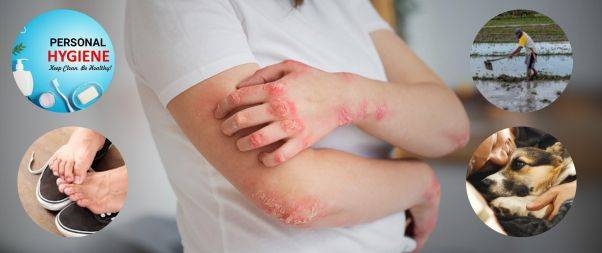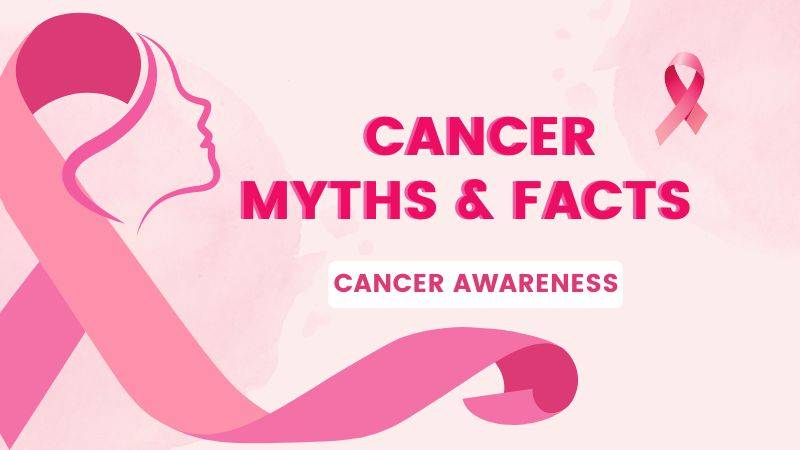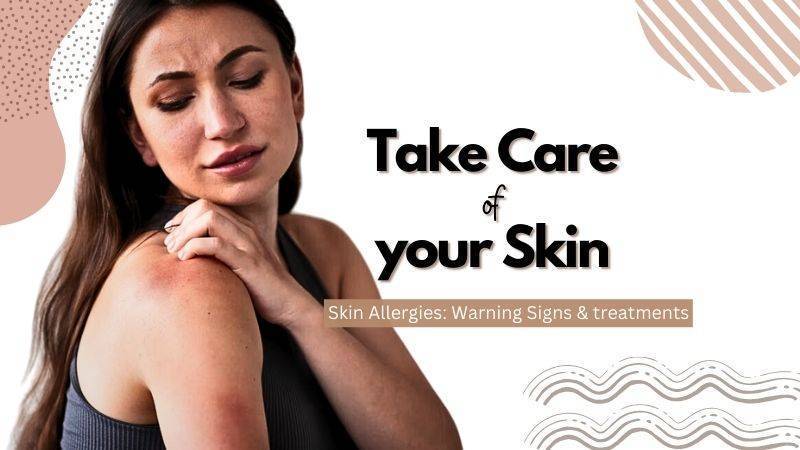Highlights
Despite diligent skincare efforts, certain skin conditions are seemingly unavoidable. Fungal infections are one such example, with most people experiencing them at least once in their lives.
Common fungal infections include athlete’s foot, diaper rashes, and jock itch. Several fungal infections make medicines, components, and treatments ineffective.
Scroll down for effective tips, treatments, and remedies for fungal infections for a better body and better skin!
What is Fungal Infection?

Our body’s most sensitive part, our skin, has an outermost layer composed of dead cells. Our body also harbors beneficial microbes, with which we share a symbiotic relationship known as “mutualism.”
Fungi often participate in this relationship, residing on the skin without causing infection, as their growth is regulated by our body’s natural checks and balances.
This disrupted balance and multiplication of fungi excessively leads to skin infection/s.
Additionally, poor personal hygiene can create an environment in which external fungi can invade the skin.
Types of Fungal Infections

There are several common fungal infections, such as:
- Athlete’s Foot (Tinea Pedis)
An athlete’s foot is a fungal infection that grows between the toes, causing itchiness and soreness primarily affect the toes but can spread to hands or fingers. It can be treated with over-the-counter creams.
Pharmacists, rather than doctors, should typically be consulted for this issue, although diabetics may need additional medical attention.
- Fungal Groin Infection (Jock Itch)
Some individuals may experience an itchy fungal infection in the groin creases or beneath the breasts. Antifungal creams like miconazole can usually clear it up.
- Ringworm
Many people will encounter ringworm at some point. This itchy, slightly red circular rash appears on the limbs or scalp and can be treated with antifungal creams. The typical ring-like appearance is due to the center clearing up while the edges remain scaly.
- Yeast Infection
Vaginal yeast infections are fairly common and occur when Candida albicans fungus grows in the vagina, causing itchiness and discharge. known as vaginal thrush.
Various treatments are available, including over-the-counter creams and tablets, as well as dietary changes. Antibiotics may sometimes cause thrush as a side effect.
- Fungal Nail Infections
Fungal nail infections can frequently affect toenails, with symptoms including:
- Whitening of the nails
- Flaking and brittleness
- Nails curving over instead of lying flat
Treatments may involve nail paints or lotions, or prescribed tablets. However, the latter may cause liver issues, so treatment should be carefully considered since most nail infections cause cosmetic concerns rather than pain or long-term damage.
A doctor will typically require a nail sample for laboratory testing before prescribing tablets.
Factors Contributing to Fungal Skin Infections

Fungal skin infections can be caused by various factors, such as
- Inadequate personal hygiene
- Underlying health conditions
- Aging, compromised immunity, and certain medications.
Some infections are also associated with specific occupations. For example,
- Individuals working in paddy fields are continuously exposed to water
- Creating damp conditions that attract fungi
- Animal handlers and pet shop owners may contract fungal infections from animals like sheep or dogs.
- Athletes’ foot is often caused by wearing tight-fitting shoes that cause continuous perspiration, creating an ideal environment for fungal growth.
Identifying Symptoms of Fungal Skin Infections

The symptoms of fungal skin infections can vary but often include:
- Persistent itching in affected areas
- Redness, erythema, and swelling
- Hardened skin and nails, often accompanied by plaque formation
- Irregular skin pigmentation, peeling, and rashes
- Rough skin texture
- Flaky, dry skin
- Discharge from infected sites, sometimes resembling pus
- Circular growth patterns characteristic of ringworm infections
- Oral thrush and diaper rashes in infants
- Yellowish discoloration of nails
Precautions to Prevent and Treat Fungal Infection

To prevent or address fungal infections, consider taking the following precautions:
- Wear clean clothing, as fungal spores may linger on unwashed garments for extended periods.
- Refrain from using abrasive detergents when laundering clothes.
- Opt for loose-fitting, breathable cotton attire to promote air circulation and minimize local sweating, both of which help lower the risk of fungal infections.
- Resist the urge to scratch the infected area, as this can exacerbate the infection and facilitate its spread.
- Cleanse the affected region two to three times daily to regulate and mitigate fungal growth.
- Keep the infected area as dry as possible to create an inhospitable environment for fungal development.
Treatments
Natural Ways to Cure Infection

Natural remedies can help alleviate fungal infections, although it’s important to consult a healthcare professional for severe or persistent cases. Here are some brief suggestions:
- Tea Tree Oil
- Apple Cider Vinegar
- Garlic
- Coconut Oil
- Probiotics
- Aloe Vera
- Oregano Oil
Remember to consult a healthcare professional if the infection is severe or does not improve with natural remedies.
Topical Ways to Cure Infection

Topical treatments are applied directly to the skin to help combat fungal infections. Here are some common topical remedies:
- Over-the-counter antifungal creams: Products containing clotrimazole, miconazole, or terbinafine can be effective in treating mild fungal infections.
- Prescription antifungal creams: For more severe cases, a doctor may prescribe creams containing ketoconazole, econazole, or ciclopirox.
As previously mentioned, topical creams are the typical treatment for these infections, although tablets may occasionally be necessary.
It is generally advisable to consult a pharmacist initially, as they can often recommend appropriate treatments without the need for a doctor’s visit or prescription medication.
Can fungal infections be contagious?
In certain instances, fungal infections may be contagious and can transmit from one individual to another. Therefore, it is crucial to seek medical advice as soon as you notice any signs or symptoms of a fungal infection.
Neglecting to treat a fungal infection can result in severe health issues, including skin infections, exhaustion, oral thrush, and more.
Also Read






